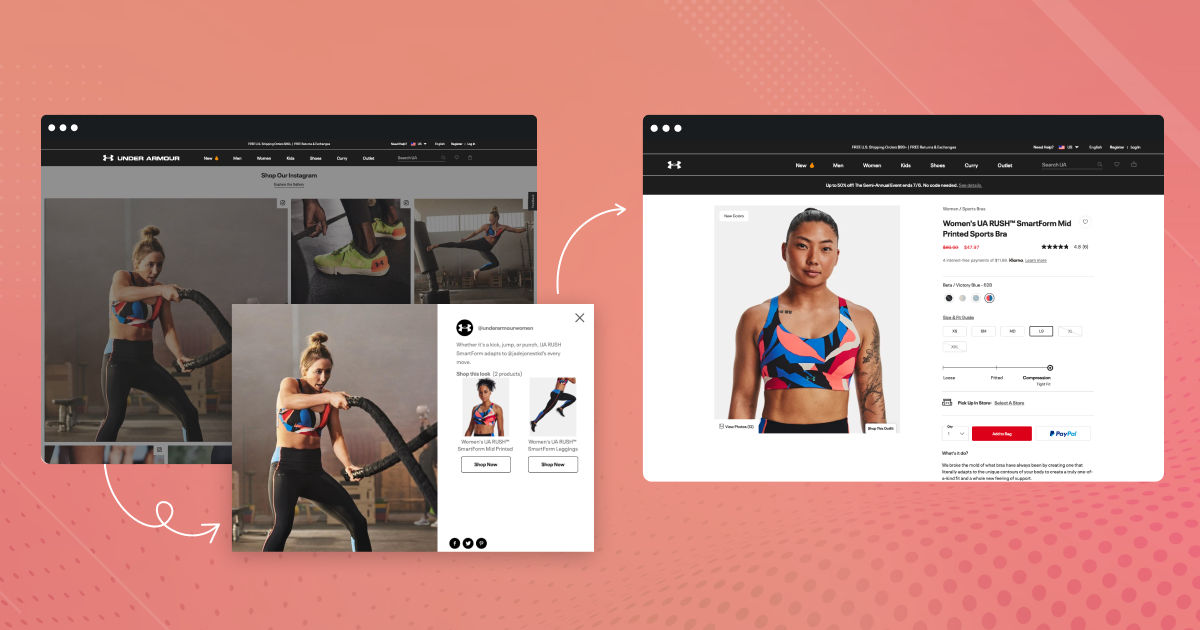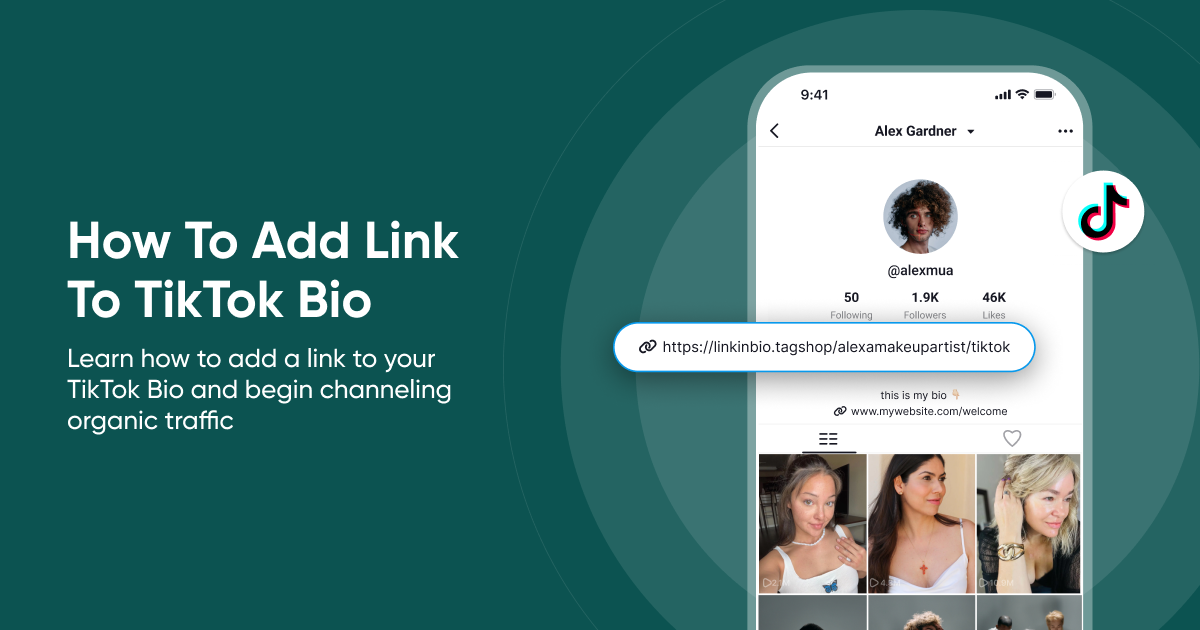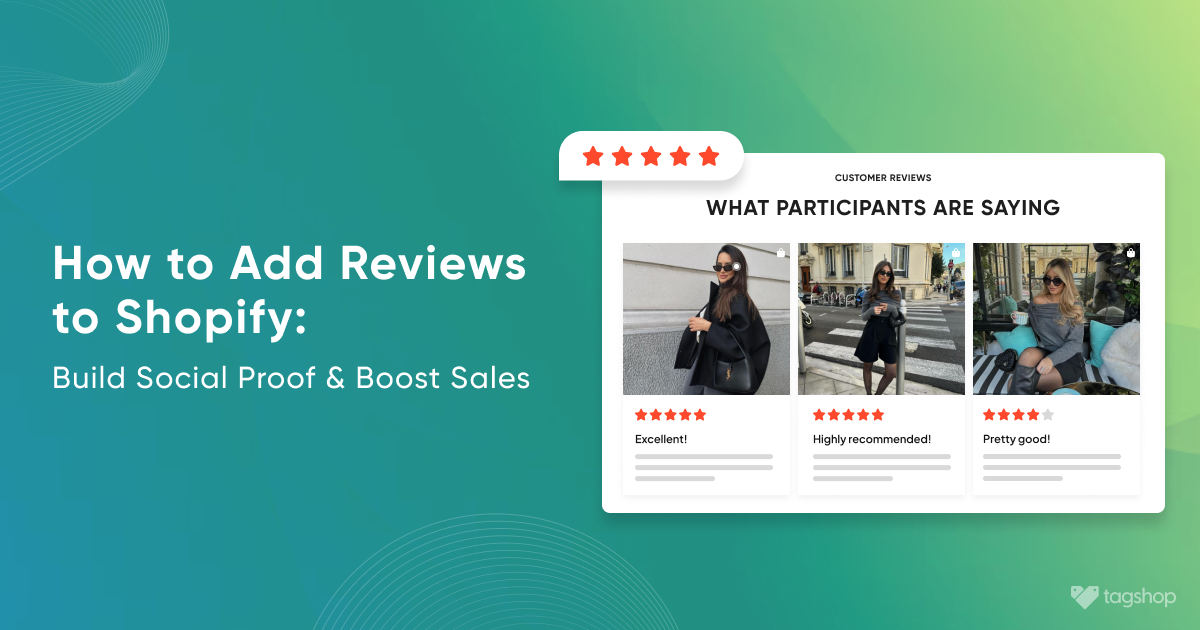Ultimate Social Commerce Strategy For D2C Brands in 2025
The best shopping experiences are those that give each shopper dominion over their buying journey.
To create shoppable moments for consumers, social commerce is supporting the Direct-to-Consumer (D2C) business model. D2C brands are bypassing traditional practices, cutting out the ‘middle-man’ and streamlining the buying process.
With an increase in direct interaction between people and brands, at any time, social media is the most powerful tool of a D2C strategy.
Social commerce gives the ability the consumer to purchase from a third-party company within the social media environment, improving purchasing efficiencies. With 74% of consumers looking to social networks to guide their purchase decisions, owning the sales channel provides valuable insights, to leverage a stronger personalized channel.
To take maximum benefit, brands need to develop interactive content to excite and engage through influencers and communities, generating conversion opportunities for both acquisition and retention. Read the blog to find out more.
What is Social Commerce for D2C Brands?
Social commerce has become the most coveted channel for consumers, as they are empowered to make informed buying decisions.
Social platforms are one of the most sought-after platforms for shoppers to find inspiration for products they want to incorporate into their lives. Brands can capture shoppers’ attention, keep them engaged in their shopping journey with content generated on the platform and boost sales.
Simply put, shoppable Instagram is a way of turning the content generated on the platform into shoppable experiences. This content being authentic and aesthetically pleasing, has the potential to improve customers’ shopping experience and guide them to purchases.
eCommerce brands can leverage social commerce tools to create and publish a shoppable Instagram gallery in any location within the online store.
How does Social Commerce Help In Addressing Consumer Behaviour?
According to a survey, 75% of the consumers have tried a new shopping behavior in the last couple of years. Apart from developing new purchase habits, shoppers’ expectations from brands have also changed. They are now connected better to each other and are communicating with each other on many fronts.
Millennials are rising to become the most predominant segment of buyers.
There’s no doubt that change is everywhere for brands and retailers. Millennials are rising to become the most influential segment. Consumers are now connected to each other all the time. And they’re communicating with each other on many fronts.
They seek personalized shopping experiences and product recommendations with a quest to see how others are using products and services. They trust real people and real experiences more than brand-generated content.
77% of shoppers are more likely to buy from brands that personalize their shopping experience.

The Advantages Of Incorporating Social Commerce Into D2C Experiences
1. Connecting better with customers
Consumers want to form connections with brands and share their brand
moments. Consumers want opportunities to engage with brands they love. And the more
brands share user-generated content, the more people are likely to share something themselves.
There’s real power in user-generated content (UGC) from brand loyalists — and with a little
guidance and encouragement from brands themselves, UGC can become a key marketing strategy that brands can harness to deepen connections with their customers.
2. Customers Care About Diversity and Inclusivity
Diversity and authenticity are important to consumers. After almost two years of challenges for people around the world, authenticity and honesty have shone through. People want to hear real stories from company leadership, happy users, and diverse voices to feel that they can connect with brands.
Consumers want to buy from brands that reflect their own values and worldviews. Diversity, equity, and inclusion (DEI) initiatives are incredibly important to today’s consumers.
65% of consumers agree that it’s important to them to see brands channelling diversity in their brand.
3. Help Customers Make Informed Decisions
Consumers are more informed than ever and aren’t sure if they trust paid ads and influencers.
Most people can tell when a brand is advertising to them, and they trust reviews and testimonials more than influencers.
Consumers aren’t sure if they trust sponsored advertisements, with 6 in 10 people feeling neutral or not trusting paid ads.
How To Integrate Social Commerce Into D2C Experiences?
The power is now with consumers, adding a layer of complexity to an already-complex fast-paced environment.
From the rise of metaverse to increasing advertising costs, supply chain issues, and keeping pace with the consumers’ ever-changing landscape of expectations – eCommerce for D2C brands quite feels like an uphill battle.
Here, integrating social commerce that highlights genuine user experiences can be a great way for D2C to lean in.
Incorporate Shoppable UGC In Product Pages
The last couple of years has been anything but consistent. What it means to be a ‘brand’ has undergone quick and significant changes. Now, using high-quality products alone isn’t enough, nor is providing an exceptional buying experience. But how your brand is perceived by the customers is all that speaks in the moments that matter.

By leveraging shoppable UGC and shoppable social content into the product pages, potential buyers can decide better if they want to go ahead with the product.
Enhance The Appeal Of Category Pages With Real Content
Category pages form the base of consumers’ buying decisions. Provided any product can win their interest, the chances of it actually selling also increases.
Integrate a shoppable Instagram gallery in the category pages to increase product awareness, provide a brief overview of what to expect, and guide users to sales.
Additionally, reviews in the category pages can help you win better rankings and boost brand awareness.
Boost Conversions By Integrating Social Content In Checkout Pages
Cart abandonment and bounce rates are eCommerce brands’ two most horrific things. But, by adding shoppable posts from Instagram, brand marketers can get over this trouble.

Imagine this, you are about to cut loose on a sale, but a product visual of a consumer actually using the product pops up on the checkout page. The probability of closing a sale here enhances as the content might influence the shopper.
Well, that is the power of shoppable content from Instagram.
Inspire Shoppers To Know About Your Brand With Shoppable UGC in Home Page
Your home page tells a lot about your brand, where the first impression is created. For example, the home page will determine whether or not a user will lock a purchase.
To develop consumers’ trust in your brand, win returning customers, and ease navigation for the visitors’ integrating shoppable Instagram makes for a great option. When people come across this content right at the point of content with your brand, they get inspired to know more about your brand.

Take Inspiration From These Leading Brands
If you have been looking to find your inspiration from brands that have already incorporated social commerce experiences into their eCommerce and are taking a lead. Here are a few to mention.
Glossier
Beauty brand Glossier drives engagement with its social content made shoppable and integrated into customers’ journeys via social shops.
The brand collects content generated by its users (UGC), which is mostly about them using the brand’s products. This content inspires more people to try the brand out and share their journey with Glossier.

In fact, the brand is far more dependent on UGC than on brand-generated content for growing sales. In fact, Glossier attributes 90% of its revenue to its fans and users, who actively post images on social media of them using products by Glossier.
2. Vans
Vans has a massive following and sneaker-heads love buying from the footwear giant. Vans tapped into its shoppers’ sentiments by curating and incorporating a shoppable Instagram gallery into its online stores.
Shoppers can get inspired by the existing users’ way of styling Vans and buy what they like the most. Additionally, it is a great way of forming deeper relationships with customers, boosting brand loyalty and targeting greater sales.
Irrespective of your brand being as old as Vans, it is always a great idea to appreciate customers’ love and give them what they seek most – a two-way brand-user relationship.

Conclusion
It won’t be wrong to conclude that social commerce is going to be the ‘the’ next big thing in the eCommerce industry.
Online stores are empowered to ease their efforts to bring their customers into the light by introducing shoppable UGC posts into their eCommerce websites. Irrespective of the niche, many businesses are already cutting an edge with theintegratingcial commerce into eCommerce, about time for you to do it too!






